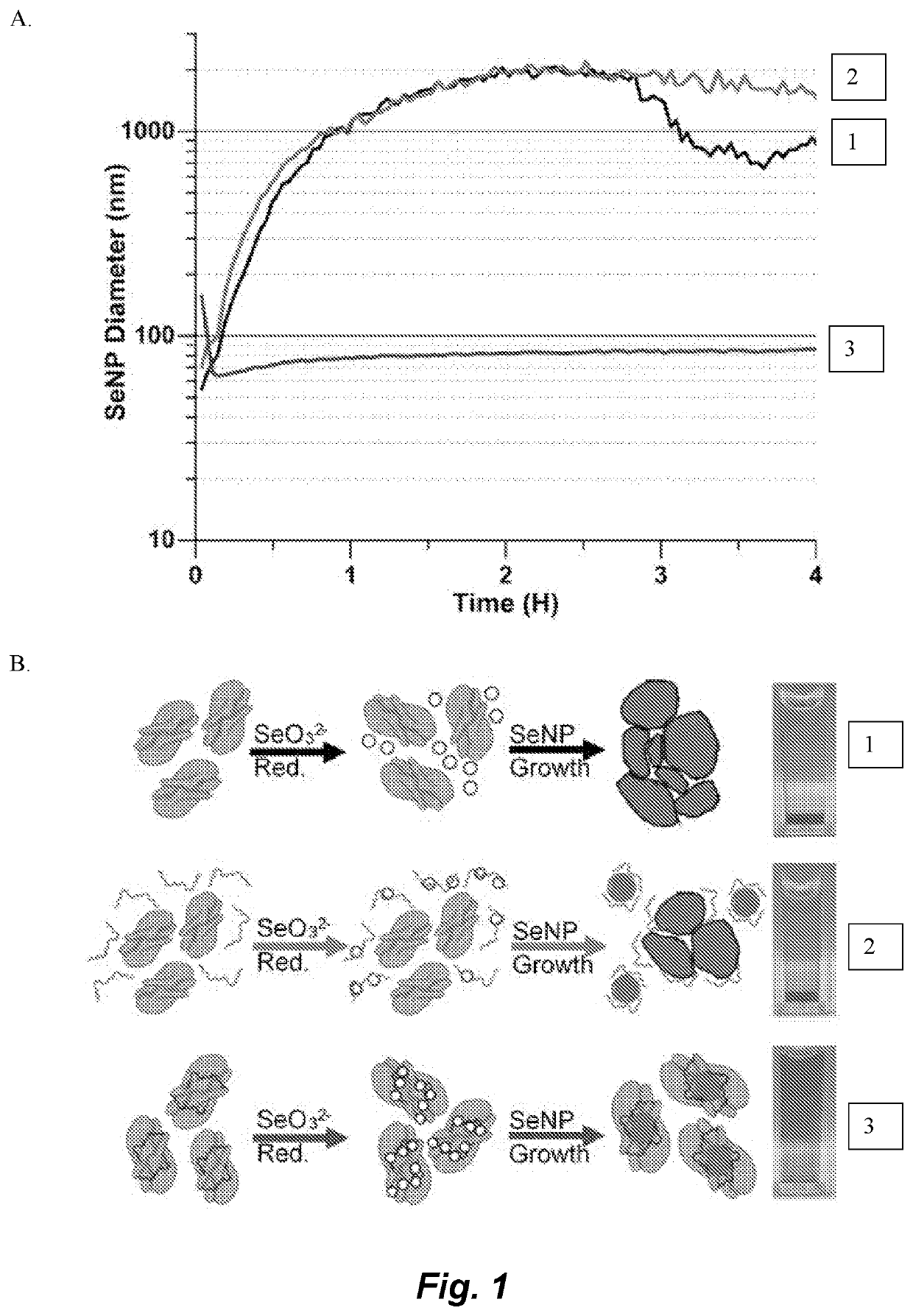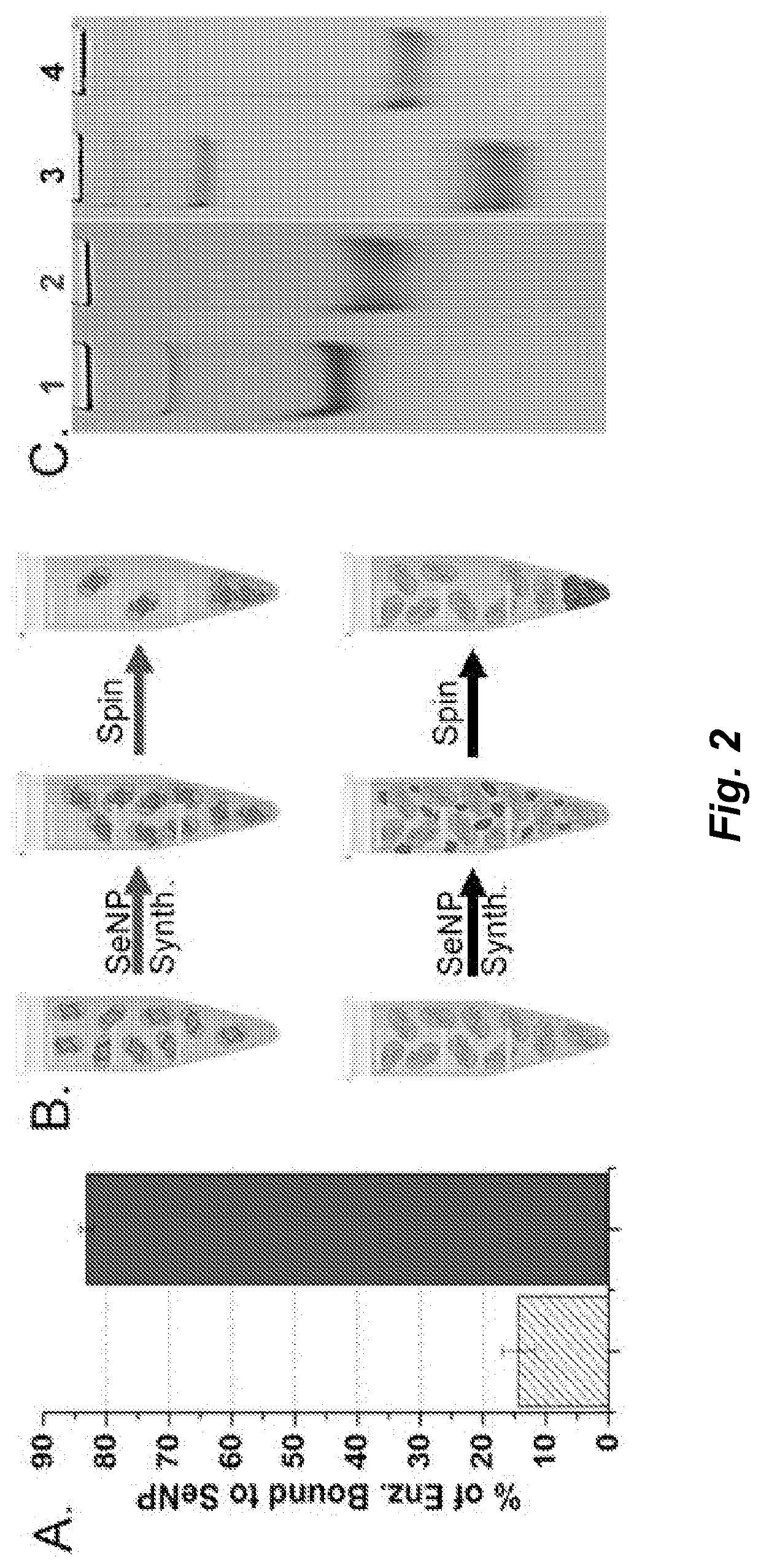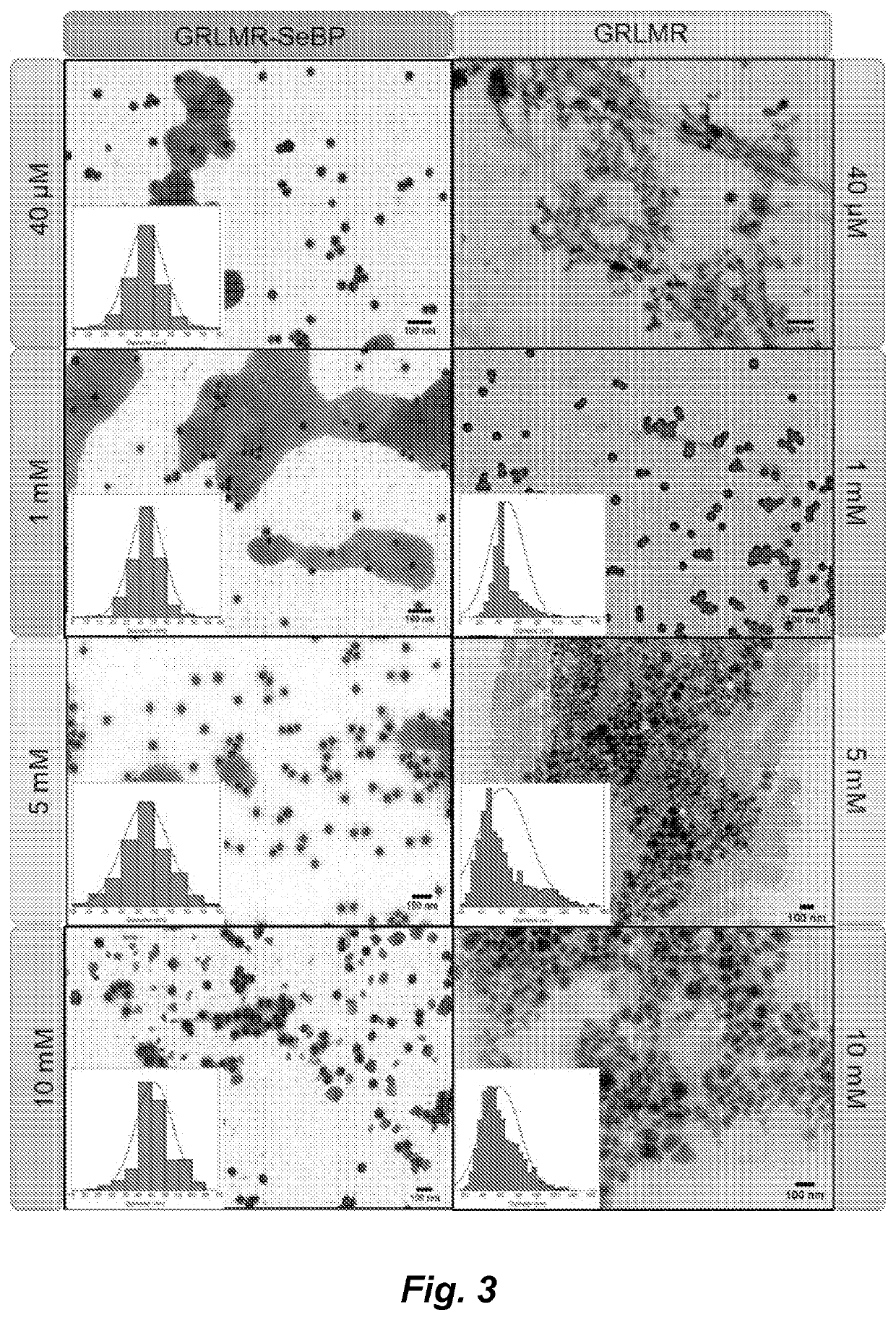A metal-reducing enzymatic tag for optical and electron microscopy
a technology of electron microscopy and enzymatic tag, which is applied in the field of metal-reducing enzymatic tag for optical and electron microscopy, can solve the problems of increasing difficulty and cost, crystallography proves difficult to achieve the purity of protein required as well as discerning stoichiometric, and the visualization of biological systems is a difficult goal to achiev
- Summary
- Abstract
- Description
- Claims
- Application Information
AI Technical Summary
Benefits of technology
Problems solved by technology
Method used
Image
Examples
example 1
and Methods
Materials
[0125]The Ph.D.™ Phage Display Kit, BSA, BspQI, T4 Ligase, Q5 High Fidelity polymerase, dNTPs, and BL21(DE3) E. coli were purchased from New England Biolabs. Antibiotics were purchased from GoldBio. Na2SeO3 and HNaSeO3 were purchased from Alfa Aesar. NADPH was purchased from BioVision and Coomassie Plus Bradford Reagent from Thermo Scientific. GeneJet Plasmid Miniprep Kit (Cat #K0503) and PCR Cleanup Kit (Cat #K0702) were purchased from ThermoFisher Scientific.
Protein Isolation and Characterization
[0126]Cultures of BL21(DE3) cells (10 mL) containing the GRLMR-SeBP or GRLMR were started and grown O / N in a shaker at 37° C. and 225 RPM. The dense cultures were diluted into 1 L of LB Kan / Cam and allowed to grow until an OD600 ˜0.5-0.6. Induction was started using a 1 mM final concentration of IPTG and was supplemented with 1 μM of HNaSeO3. Growth was O / N at 37° C. Cells were then spun down at 14000 RPM for 20 minutes and resuspended into B-PER and sonicated to lyse t...
example 2
Cloneable Nanoparticles
[0143]The flowchart in FIG. 12 shows how a metal / metalloid reducing enzymayic gene is cloned into a gene of interest (FIG. 13) and when expressed produces a fusion protein of the target protein and the redox active tag. Incubation with the metal salt precursors leads to the reduction or the precursors and subsequent nucleation and growth of an inorganic NP. In order to increase the baseline retention of NPs by the enzyme, a peptide selected specifically for SeNPs was identified and fused to the enzymatic tag. A concatemer was produced of the GRLMR and fused to the E. coli protein FtsZ, a tubulin analogue to explore the activity of both the enzymatic tag and the FtsZ target protein. Transmission electron microscopy (TEM) images of FtsZ undergoing cell division is shown in FIG. 14.
[0144]A glutathione reductase-like metalloid reductase, GRLMR isolated from Pseudomonas moraviensis stanleyea acts as the cNP enzyme for its Se-reductase activity. An identified Se-bin...
PUM
| Property | Measurement | Unit |
|---|---|---|
| diameter | aaaaa | aaaaa |
| diameter | aaaaa | aaaaa |
| pH | aaaaa | aaaaa |
Abstract
Description
Claims
Application Information
 Login to View More
Login to View More - R&D
- Intellectual Property
- Life Sciences
- Materials
- Tech Scout
- Unparalleled Data Quality
- Higher Quality Content
- 60% Fewer Hallucinations
Browse by: Latest US Patents, China's latest patents, Technical Efficacy Thesaurus, Application Domain, Technology Topic, Popular Technical Reports.
© 2025 PatSnap. All rights reserved.Legal|Privacy policy|Modern Slavery Act Transparency Statement|Sitemap|About US| Contact US: help@patsnap.com



